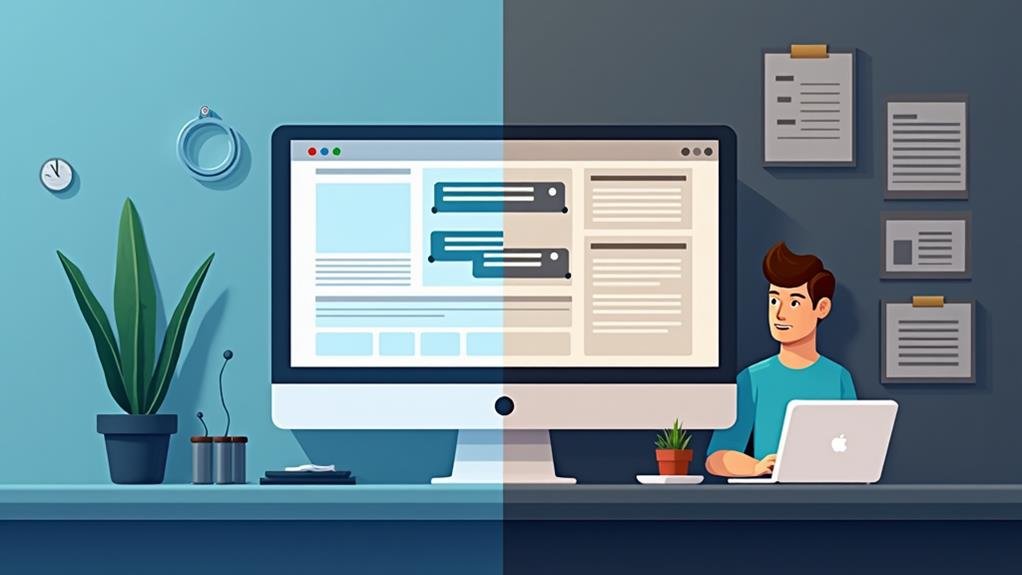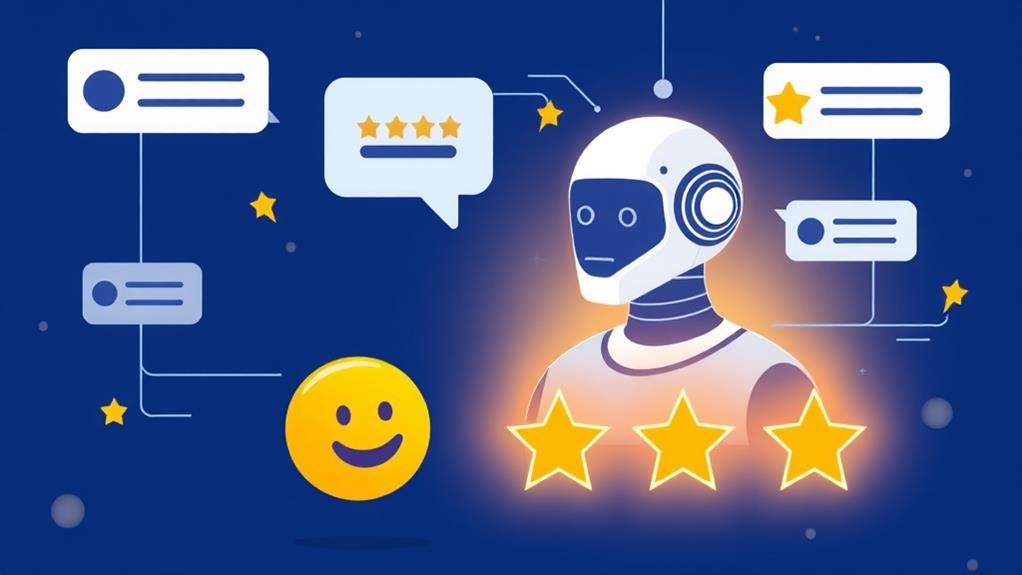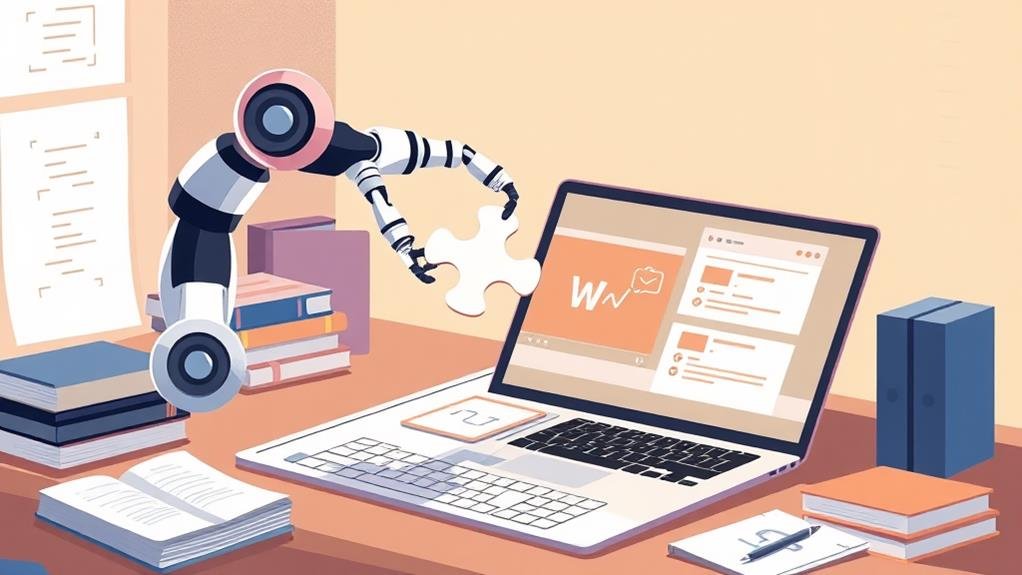
When incorporating chatbots into your web design, you'll release benefits like 24/7 customer support, increased conversion rates, and operational cost savings. Chatbots provide timely support, answer FAQs, and even help with lead generation. Plus, they analyze user data to provide personalized recommendations and services. However, they also have limitations, such as struggling with complex requests, lacking emotional intelligence, and potentially leading to negative customer experiences. To implement chatbots effectively, it's vital to understand these pros and cons and take a strategic approach to maintenance and updates - and by exploring further, you'll unearth the key to balancing these contradictions and maximizing the benefits of chatbot technology.
Having a customer support team available 24/7 can be a game-changer for businesses, and chatbots make this a reality without breaking the bank.
With chatbots, you can provide your customers with immediate responses to their queries, leading to increased customer satisfaction and loyalty. This, in turn, can lead to higher conversion rates, as customers are more likely to engage with your business when they receive timely support.
By providing 24/7 customer support through chatbots, you've taken the initial step in creating a seamless customer experience. Now, it's time to take it to the next level by leveraging chatbots to propel sales and lead generation. With artificial intelligence-powered chatbots, you can proactively engage with customers, answer questions, and address customer inquiries in real-time. This not only improves customer satisfaction but also increases the chances of converting leads into sales.
Here's how chatbots can supercharge your digital marketing efforts:
| Marketing Campaign | Chatbot Benefits | Lead Generation Impact |
|---|---|---|
| Personalized Messages | Tailor-made responses based on user behavior | Increase conversion rates by 20% |
| Real-time Engagement | Instantly respond to customer inquiries | Reduce bounce rates by 30% |
| Automated Follow-ups | Send targeted follow-up messages | Enhance lead generation by 25% |
| Customer Segmentation | Identify and segment high-value customers | Increase sales by 15% |
| Data Analysis | Gain valuable insights into customer behavior | Optimize marketing strategies for better ROI

Implementing chatbots in your web design can substantially decrease operational costs and augment efficiency.
By automating routine tasks, you can save up to 30% of operational costs, allowing you to allocate resources more effectively. Chatbots can handle an infinite number of customer inquiries simultaneously, reducing the need for human agents and operational costs.
This makes them a cost-effective solution for businesses, especially during peak hours or periods of high demand. You can save up to 50% of operational costs by implementing chatbots to handle basic customer inquiries, freeing up human agents to focus on complex issues.
Furthermore, chatbots minimize the need for supplementary staffing, training, and infrastructure, making them an attractive solution for businesses of all sizes.
Your website's vault of user data can be accessed with chatbots, which can collect and analyze it to provide personalized recommendations and services, ultimately enhancing customer engagement and satisfaction.
By leveraging data analysis and machine learning algorithms, chatbots can identify patterns and trends in customer behavior, enabling you to make data-driven decisions. This means you can create tailored responses to customer inquiries, improving the general quality of customer support and reducing the likelihood of miscommunication.
The data collected by chatbots can be used to create detailed customer profiles, allowing you to better understand your target audience and develop targeted marketing strategies. In addition, chatbots can use data to identify areas for improvement in the customer experience, enabling you to make necessary changes and optimize your support strategy.

The widespread adoption of chatbots is largely driven by their ability to meet customer expectations and satisfaction.
As you consider incorporating chatbots into your web design, understanding how they can improve customer satisfaction is crucial.
With 96% of people familiar with chatbots and 88% having had at least one chatbot exchange in the past year, it's clear that customers are comfortable with this technology.
Chatbots can help you meet customer expectations for instant support and answers to frequently asked questions, providing a competitive advantage in customer satisfaction.
By offering 24/7 support and instant answers, chatbots can increase customer satisfaction and loyalty, leading to repeat business and positive word-of-mouth.
Additionally, chatbots can provide support in multiple languages, making them a valuable solution for businesses with global customers and helping to meet the expectations of a diverse customer base.
Concrete barriers can hinder the efficiency of chatbots, and it's crucial to recognize these limitations to guarantee a seamless customer experience.
You need to acknowledge that chatbots can struggle with complex requests or nuanced language, leading to misunderstandings and incorrect responses. This is because they lack a deeper understanding of language flow and idiosyncrasies. They can also struggle to recognize slang or pick up on and reflect emotion, making them seem mechanical and impersonal.
Furthermore, chatbots can take too long to respond, leading to irritation and lost business.
They can be limited in their ability to handle complex or off-script questions and issues, requiring human intervention and support. Additionally, they lack the subtlety and compassion of human agents, leading to negative customer experiences.
They aren't able to understand the emotional tone and context of customer interactions, which can be a major drawback.

Efficiency demands continuous attention, and chatbots are no exception.
To guarantee your chatbot remains effective and efficient, you'll need to commit to ongoing maintenance and updates. This is vital because chatbots require continuous training and improvement to reflect changes in products, services, and company developments.
Failing to update your chatbot can lead to inaccuracies, inconsistencies, and a decline in customer satisfaction.
Regular maintenance involves refining your chatbot's language processing capabilities, updating its knowledge base, and certifying seamless integration with existing systems and infrastructure.
You'll also need to apply new security patches and fixes to prevent cyber-attacks and data breaches.
The complexity and frequency of updates will depend on the type of chatbot, its functionality, and the industry it operates in.
Be sure to allocate sufficient resources and budget for maintenance and updates to guarantee your chatbot continues to meet customer needs and expectations.
While interacting with your brand's chatbot, you've likely encountered frustrating experiences that left you feeling unheard or misunderstood.
This is because chatbots can struggle to understand the nuances of human emotions, leading to insensitive or robotic responses that negatively impact customer experience. As a customer, you need to feel heard and understood, but chatbots often fail to provide this emotional support.
A study found that 64% of customers are frustrated when they can't reach a human customer support agent, highlighting the importance of balancing automation with human touch.
Chatbots may not be able to handle complex or multi-step issues, causing frustration and dissatisfaction among customers who are unable to resolve their problems efficiently.
In this sense, the lack of empathy and emotional intelligence in chatbots can lead to a negative customer experience, particularly in situations where customers are seeking emotional support or reassurance. Moreover, chatbots may not be able to understand sarcasm, humor, or idioms, leading to misinterpretation and miscommunication that can negatively impact customer experience, and thus, the need for human interaction becomes more pressing with each passing stage.

To reap the benefits of chatbots, you need to implement them strategically and effectively, which involves more than just deploying a conversational interface on your website.
Implementing AI chatbots requires understanding customer needs and pain points to design a conversational flow that addresses their concerns and provides personalized solutions.
A well-designed chatbot should be able to seamlessly hand over complex or emotionally charged conversations to human agents, ensuring a smooth shift and maintaining customer satisfaction.
Effective chatbot implementation involves continuous monitoring and analysis of user interactions to identify areas for improvement and optimize the conversation flow.
By integrating chatbots with CRM systems and other tools, you can access customer data and provide more personalized and relevant responses, increasing the chances of conversion and customer loyalty.
You're wondering what the pros and cons of chatbots are. Well, they can provide 24/7 customer support, automate tasks, and increase engagement, but they can also lack human empathy, be prone to errors, and frustrate users if not implemented correctly.
You'll likely encounter the negative side of chatbots when they're unable to understand complex queries, leading to frustration and annoyance, or when they're overly pushy, causing a negative user experience, ultimately driving you away from the website.
You'll want to use a chatbot on your website because it'll provide 24/7 support, automate routine tasks, and free up staff for complex issues, ultimately leading to increased customer satisfaction, loyalty, and even sales and revenue.
You'll find that chatbots offer several benefits, including 24/7 support, increased engagement, and personalized recommendations, which lead to higher conversion rates and customer satisfaction, freeing up your time to focus on more complex issues and high-value tasks.
As you weigh the pros and cons of using chatbots in web design, bear in mind that strategic implementation is key. By understanding the benefits of 24/7 customer support, sales surges, and operational efficiency, you can harness chatbots to amplify your online presence. However, don't overlook the potential drawbacks, such as limitations in understanding and negative impacts on customer experience. By being aware of these factors, you can create a chatbot that complements your website and meets your customers' needs effectively.